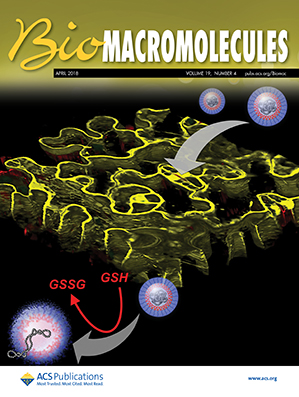聚合物纳米粒子的表征:一个基于PEO-PCL自组装的教育案例,说明了要避免的陷阱。
IF 5.4
2区 化学
Q1 BIOCHEMISTRY & MOLECULAR BIOLOGY
引用次数: 0
摘要
尽管用于药物输送的聚合物纳米颗粒经常被描述,但它们的彻底特性往往被忽视。提出了两种含有聚环氧乙烷-嵌段聚(ε-己内酯)(PEO-PCL)共聚物的自组装体系,以说明它们必须进行表征的极端谨慎性:PEO-PCL 5000-4000 g·mol-1产生单一的胶束,而PEO-PCL 2000-7000 g·mol-1形成胶束,囊泡和蠕虫样物体的混合物。两者最初都是通过单角动态光散射(DLS)和透射电子显微镜(TEM)进行表征的,这是标准的做法。PEO-PCL 5000-4000胶束的分析证明了这些技术在这种情况下的相关性。然而,虽然DLS显示PEO-PCL 2000-7000为单一种群,但TEM图像显示形态混合。互补冷冻透射电镜成像和多角度动态和静态光散射分析为改进表征提供了必要的信息。基于这些例子,本文提出了可靠表征聚合物纳米颗粒的建议。本文章由计算机程序翻译,如有差异,请以英文原文为准。
Characterization of Polymer Nanoparticles: An Educational Case Based on PEO–PCL Self-Assemblies Illustrating the Pitfalls to be Avoided
Although polymer nanoparticles for drug delivery are routinely described, their thorough characterization is often overlooked. Two systems containing self-assemblies of poly(ethylene oxide)-block-poly(ε-caprolactone) (PEO–PCL) copolymers are presented to illustrate the extreme caution with which they must be characterized: PEO–PCL 5000–4000 g·mol–1 yielded a single population of micelles, while PEO–PCL 2000–7000 g·mol–1 formed a mixture of micelles, vesicles, and wormlike objects. Both were initially characterized by single-angle dynamic light scattering (DLS) and transmission electron microscopy (TEM), as is standard practice. The analysis of the PEO–PCL 5000–4000 micelles demonstrated the relevance of these techniques in such a case. However, while DLS indicated a single population for PEO–PCL 2000–7000, TEM images revealed a mixture of morphologies. Complementary cryo-TEM imaging and multiangle dynamic and static light scattering analyses provided essential information for an improved characterization. Based on these examples, this article offers recommendations for the reliable characterization of polymer nanoparticles.
- Download: Download high-res image (183KB)
- Download: Download full-size image
求助全文
通过发布文献求助,成功后即可免费获取论文全文。
去求助
来源期刊

Biomacromolecules
化学-高分子科学
CiteScore
10.60
自引率
4.80%
发文量
417
审稿时长
1.6 months
期刊介绍:
Biomacromolecules is a leading forum for the dissemination of cutting-edge research at the interface of polymer science and biology. Submissions to Biomacromolecules should contain strong elements of innovation in terms of macromolecular design, synthesis and characterization, or in the application of polymer materials to biology and medicine.
Topics covered by Biomacromolecules include, but are not exclusively limited to: sustainable polymers, polymers based on natural and renewable resources, degradable polymers, polymer conjugates, polymeric drugs, polymers in biocatalysis, biomacromolecular assembly, biomimetic polymers, polymer-biomineral hybrids, biomimetic-polymer processing, polymer recycling, bioactive polymer surfaces, original polymer design for biomedical applications such as immunotherapy, drug delivery, gene delivery, antimicrobial applications, diagnostic imaging and biosensing, polymers in tissue engineering and regenerative medicine, polymeric scaffolds and hydrogels for cell culture and delivery.
 求助内容:
求助内容: 应助结果提醒方式:
应助结果提醒方式:


